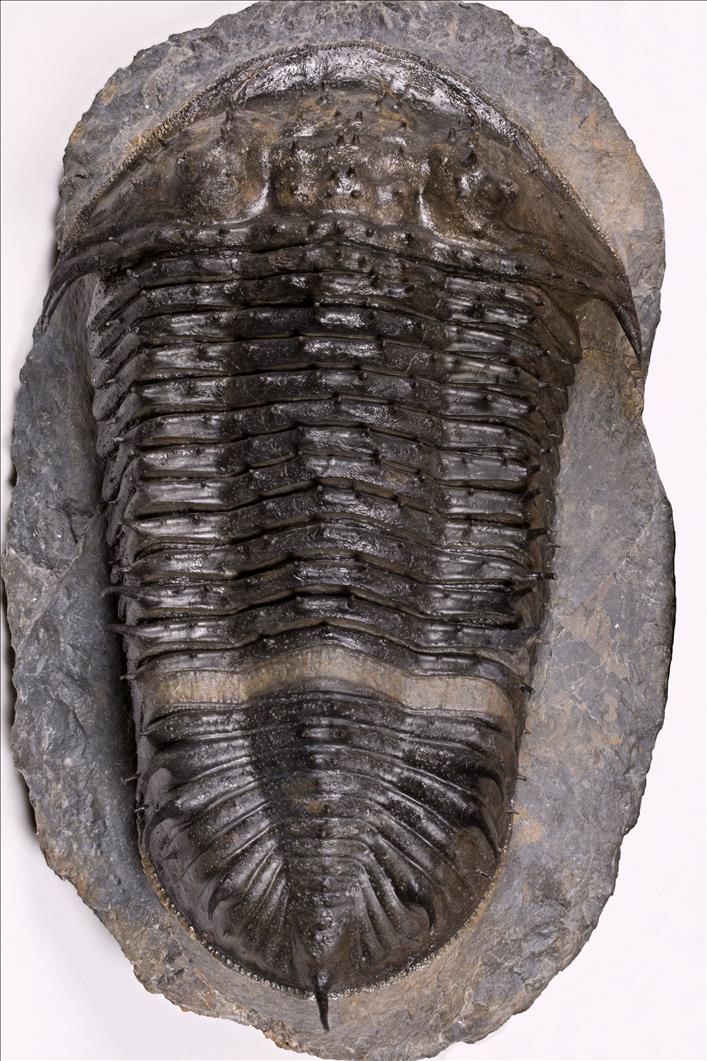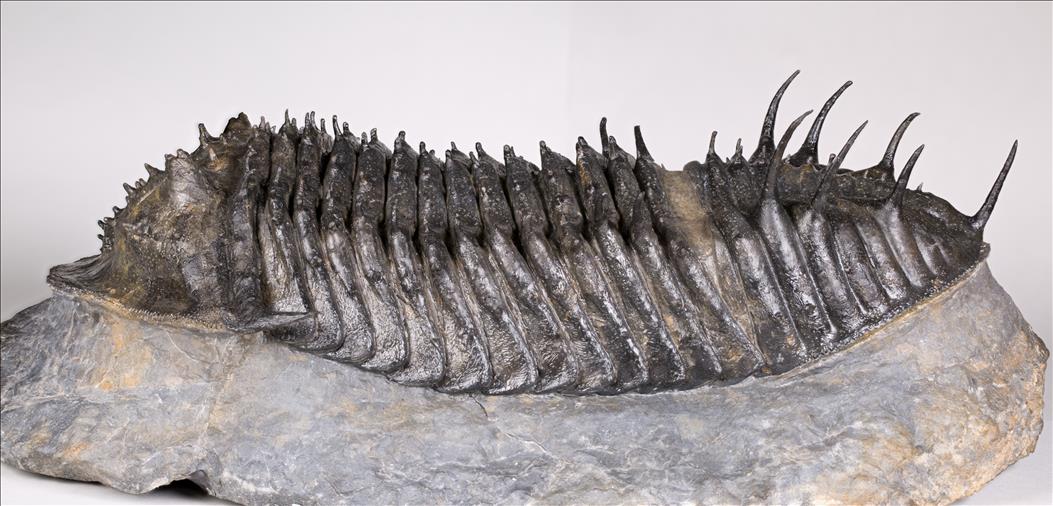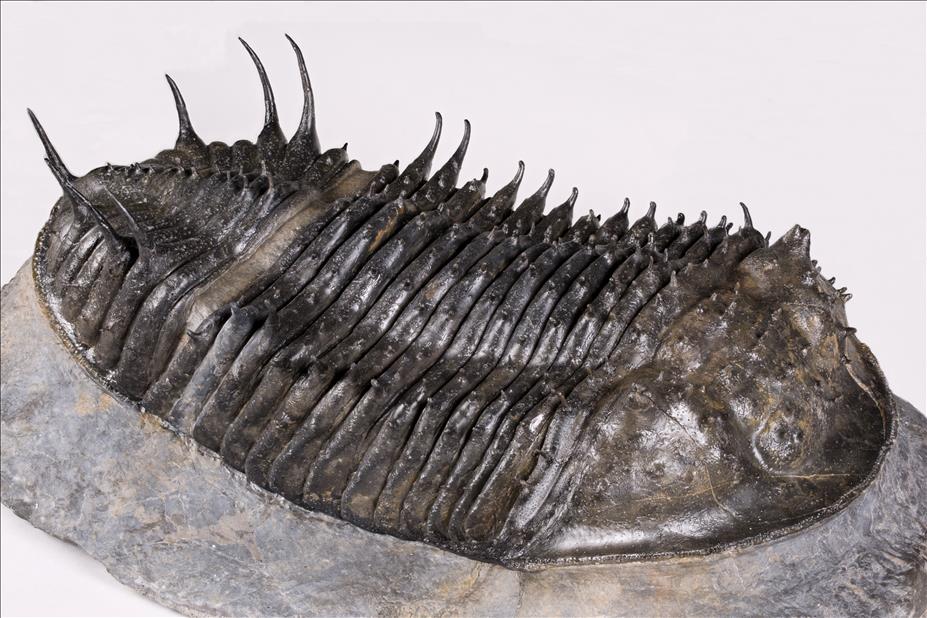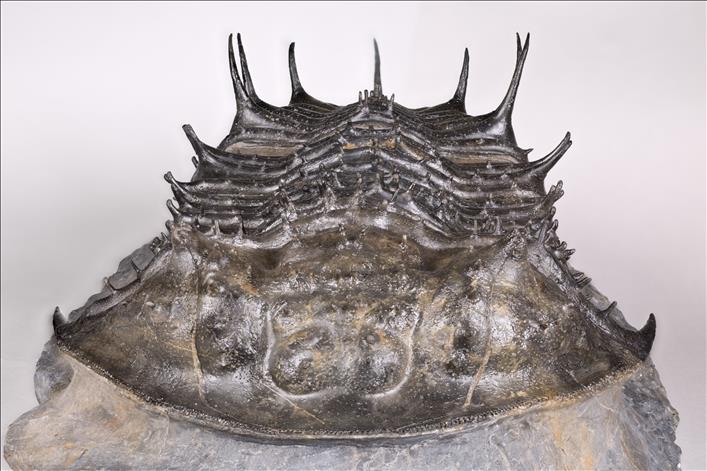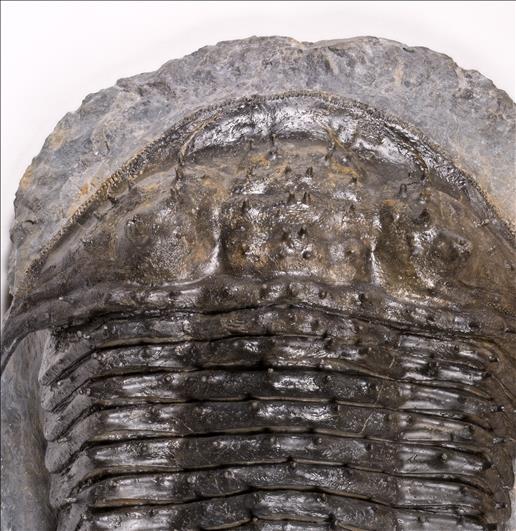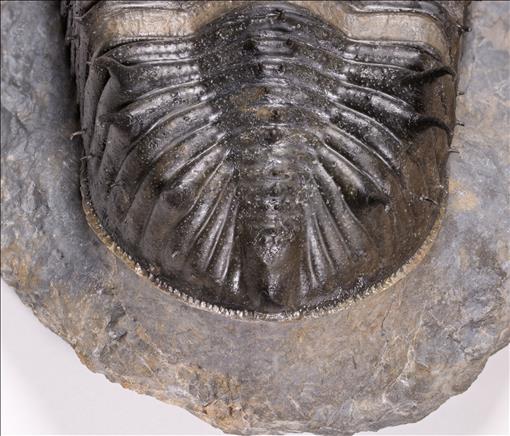This is a most unusual member of the Homalonotidae. Most trilobites in that family are burrowing trilobites and have smooth, domed carapaces to facilitate such a life style. While some members of the genus, such as Scabrellana propradoana, fit this description, this bug is too spiny to have been a burrowing trilobite. This is my largest spiny trilobite.
I imagine that for some reason its unspiny ancestors decided to live upon the sea floor rather than under it -- maybe food was easier to find there. But the ocean had become a bad neighborhood since its Ordovician ancestors first adopted an underground lifestyle. During the Ordovician all fish were jawless, and no threat to a grown trilobite. But by the Devonian most fish had jaws, and could easily chomp on a Scabrellana trilobite. So there was strong selection pressure to become unpalatable by becoming very spiny, and this species was the result.
Note the tiny, fine spines all along the front of the head and the back of the pygidium.
